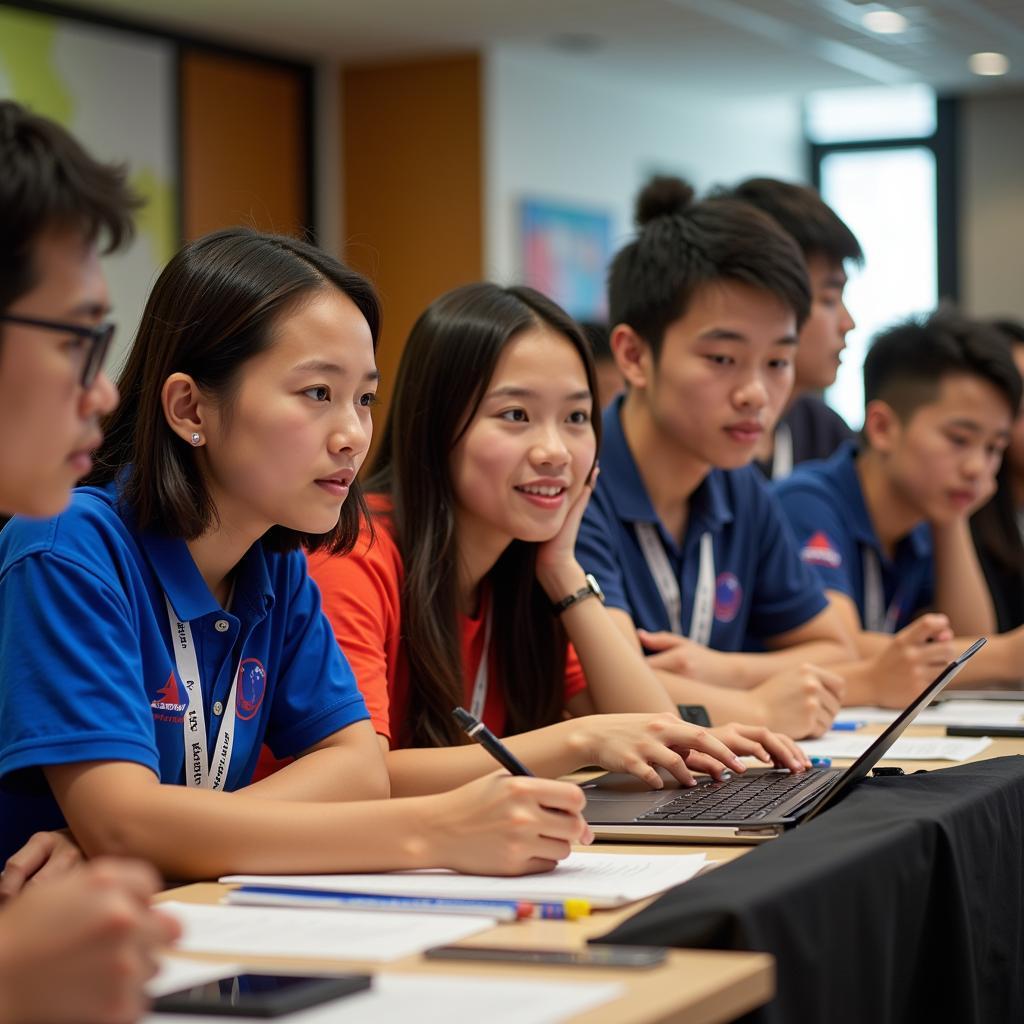Southeast Asia, a region known for its rich history, diverse cultures, and breathtaking landscapes, is also home to a vibrant and dynamic art scene. Asean Art, encompassing the creative expressions of the 10 member states, offers a captivating journey through the region’s cultural heritage, societal values, and artistic innovations. From traditional crafts passed down through generations to contemporary art pushing boundaries, ASEAN art provides a unique lens through which to understand the soul of Southeast Asia.
A Fusion of Influences: Tracing the Roots of ASEAN Art
ASEAN art is a melting pot of influences, shaped by centuries of cultural exchange and historical events. Early civilizations left their mark through magnificent temples like Angkor Wat in Cambodia and Borobudur in Indonesia, showcasing intricate carvings and sculptures influenced by Hinduism and Buddhism. The region’s strategic location along ancient trade routes facilitated the exchange of artistic ideas and techniques with China, India, and other parts of the world.
Diverse Expressions: Exploring the Spectrum of ASEAN Art Forms
Traditional Crafts: Echoes of Heritage and Identity
From the intricate batik textiles of Indonesia and Malaysia to the delicate silk weavings of Thailand and Vietnam, traditional crafts in ASEAN are not merely objects but expressions of cultural identity and ancestral knowledge. These crafts, often passed down through generations, embody the stories, beliefs, and artistic sensibilities of the communities that create them.
Performing Arts: A Celebration of Life and Ritual
The performing arts in ASEAN are a vibrant tapestry of music, dance, and storytelling. Traditional dance forms like the Legong of Bali and the Apsara dance of Cambodia are not merely entertainment but integral parts of religious ceremonies and cultural celebrations. These performances often convey ancient myths, historical events, and social values through graceful movements, elaborate costumes, and evocative music.
Contemporary Art: A Dialogue with the Present
Contemporary art in ASEAN reflects the region’s evolving identity in a globalized world. Artists engage with issues of identity, social change, and political landscapes through various mediums, including painting, sculpture, installation, and performance art. The rise of contemporary art spaces and galleries across Southeast Asia provides platforms for artists to challenge conventions, spark dialogue, and showcase the dynamism of the region’s art scene.
ASEAN Art in the Digital Age: Reaching New Audiences
The digital revolution has significantly impacted how ASEAN art is created, experienced, and disseminated. Online platforms and social media have become important tools for artists to showcase their work, connect with global audiences, and engage in cross-cultural collaborations. Virtual exhibitions and online galleries make ASEAN art more accessible than ever, breaking down geographical barriers and fostering greater appreciation for the region’s creative expressions.
The Enduring Power of ASEAN Art: Fostering Dialogue and Understanding
ASEAN art plays a vital role in fostering cultural diplomacy and promoting dialogue among the member states and with the wider world. Through exhibitions, workshops, and artist exchanges, ASEAN art initiatives aim to bridge cultural differences, celebrate shared heritage, and encourage greater understanding and appreciation for the diversity within Southeast Asia.
Conclusion: ASEAN Art – A Journey of Discovery
Exploring ASEAN art is an enriching journey that offers glimpses into the soul of Southeast Asia. From the ancient temples to contemporary art galleries, from traditional crafts to experimental performances, the region’s art scene is a testament to the creativity, resilience, and cultural richness of its people. As ASEAN continues to evolve as a region, its art will undoubtedly play an even more significant role in shaping its identity, fostering dialogue, and inspiring future generations.
FAQs
1. What are some of the key characteristics of ASEAN art?
ASEAN art is characterized by its diversity, reflecting the region’s rich history, cultural influences, and artistic traditions. Common themes include spirituality, nature, daily life, and social commentary.
2. Where can I find more information about ASEAN art?
You can explore online resources, visit museums and galleries specializing in Southeast Asian art, and attend art exhibitions and cultural events.
Need More Information?
Contact us at Phone Number: 0369020373, Email: [email protected], or visit our office located in Ngoc Lien Village, Hiep Hoa, Bac Giang, Vietnam. Our dedicated customer support team is available 24/7 to assist you.
